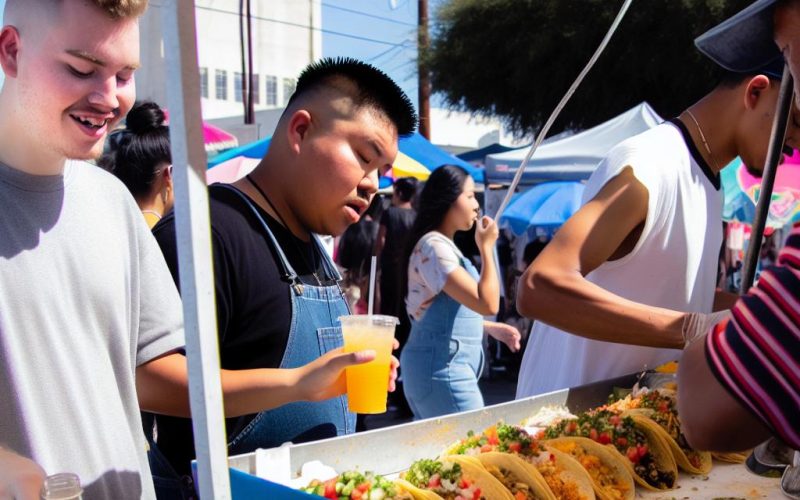Overview of Street Food Culture in Central America
Street food is an integral component of daily life and culture in Central America, offering both locals and tourists a chance to experience authentic regional tastes and culinary traditions. This lively and dynamic food scene reflects the area’s diverse cultural influences, geographic variety, and rich history.
Geographical Spread and Diversity
Central America consists of several countries, each bringing its unique perspective to the street food scene. The region comprises countries such as Guatemala, Honduras, El Salvador, Nicaragua, Costa Rica, and Panama. Each of these countries offers a wide array of street food options heavily influenced by indigenous, Spanish, African, and Caribbean culinary practices. While one may find variations from one country to another, many common elements unify the street food cultures across these nations.
Influences and Traditions
The culinary influences that shape Central American street food are as varied as the cultures that reside in this region. The contribution of indigenous peoples has provided many foundational dishes and cooking methods, such as the use of corn and traditional steaming techniques. The Spanish influence brought new ingredients and cooking techniques, which were adapted into existing indigenous practices, creating fusion foods that still dominate the streets. Additionally, the African influence introduced new spices and flavors, adding depth and diversity to the culinary landscape.
Key Ingredients
The region’s street food commonly relies on the abundant use of corn, beans, and fresh produce, forming the basis of many traditional dishes. These staple ingredients are often paired with locally sourced meats, a variety of spices, and, in certain coastal areas, seafood. Corn holds a special place and frequently appears in the form of tortillas, which serve as a base or accompaniment for an array of popular street foods.
Popular Street Foods
Street food across Central America is rich in flavor and variety. Among the delicacies, there are several standout dishes that define the culinary scene.
Tamales
Tamales are a traditional dish not only in Central America but across the broader Latin American region. They consist of corn dough filled with meats, vegetables, or beans, and are encased in banana leaves or corn husks before being steamed. In Central America, each country presents its unique version of tamales, characterized by variations in fillings and wrappings. While the base recipe remains similar, the diversity of tamales is vast, echoing the range of regional cultural nuances.
Pupusas
Pupusas are an iconic staple in El Salvadoran street food culture. These are thick corn tortillas filled primarily with cheese, beans, or meats. Traditionally served with a side of curtido — a tangy cabbage slaw — and a generous helping of tomato salsa, pupusas have transcended national borders and gained popularity across Central America. Serving pupusas fosters a connection between people, inviting both locals and tourists to experience a taste of El Salvadoran tradition.
Gallo Pinto
In Costa Rica and Nicaragua, gallo pinto holds a place of honor as a beloved dish. Comprised of rice and beans that are fried with onions, peppers, and cilantro, it embodies the essence of comfort food. Though primarily a breakfast staple, it can be served with accompaniments such as eggs, cheese, or plantains, making it a versatile dish enjoyed throughout the day.
Baleadas
Baleadas, originating from Honduras, present a perfect blend of texture and taste. They consist of flour tortillas folded around a blend of refried beans, cheese, and cream. Personal preferences have led to the creation of countless variations, where additional ingredients like avocado, scrambled eggs, or different meats might be included. Such customization speaks to the dish’s widespread popularity and appeal.
Cultural Significance
Street food in Central America extends beyond the realm of culinary delight; it represents a cultural touchstone that reflects communal life. It serves as a gathering point, facilitating familial and communal interactions. In many towns and cities, street vendors are entrepreneurial family-run stalls or carts that have become a cherished tradition, passed down through successive generations. These vendors play a pivotal role in sustaining and promoting local culinary traditions, contributing to community bonds.
Sustainability and Economic Impact
Street food vendors hold a significant position in the local economies of Central American countries. Their operations create jobs and support local agricultural producers by utilizing regional ingredients. The affordability and accessibility of street food ensure its wide reach, enabling people from varied socioeconomic backgrounds to enjoy traditional dishes. This contributes not only to cultural preservation but also to enhancing food security. Furthermore, the popularity of street food draws in tourists, spurring additional economic activity and investment in these regions.
Conclusion
Central America’s street food culture provides an enriching culinary experience that captures the essence of the region’s history, traditions, and ongoing innovations. Whether one is savoring a freshly prepared pupusa, exploring diverse versions of tamales, or enjoying the familiar comfort of gallo pinto, street food offers an invaluable insight into the heart of Central American life and its enduring heritage. For those intrigued by this vibrant culture, additional resources and travel blogs offer more in-depth exploration of authentic street food experiences, further immersing oneself in the rich tapestry of flavors that Central America boasts.
